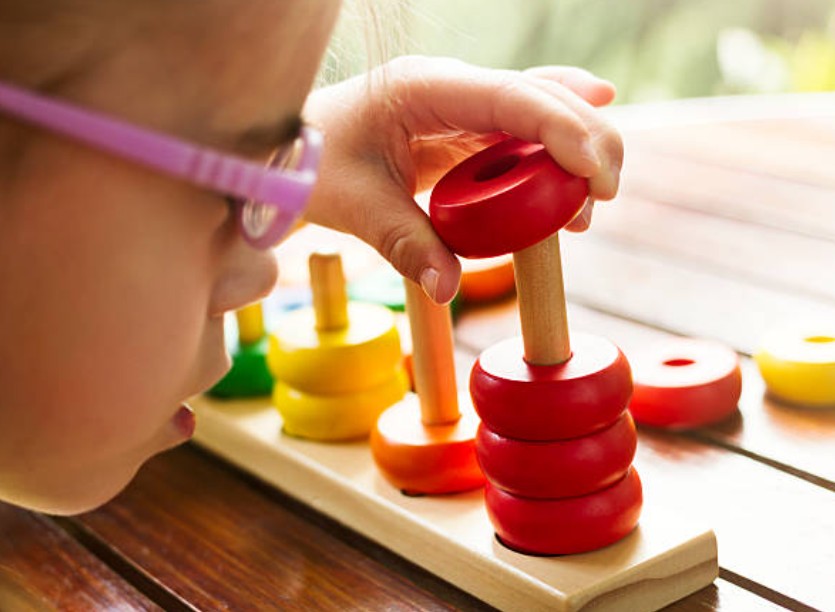Montessori toys have long been celebrated for their ability to support a child’s natural development through play, and when combined with eco-conscious values, they offer an even greater benefit—not just for your child, but for the planet. At Montessori Australia, we understand the importance of creating educational tools that are both effective and sustainable. In this guide, we’ll explore eco-friendly Montessori toys, focusing on the science behind their design and how they contribute to early childhood education.

Why Eco-Friendly Montessori Toys Matter
Montessori education emphasizes respect for the child, the environment, and the materials used in learning. Eco-friendly Montessori toys align perfectly with these values. Crafted from sustainable resources such as FSC-certified wood, organic cotton, and non-toxic dyes, these toys minimize environmental impact while offering safe, high-quality play experiences.
Key Benefits:
-
Sustainability: Toys made from renewable or recycled materials reduce carbon footprint.
-
Safety: Natural materials like wood and cotton are less likely to contain harmful chemicals.
-
Durability: High-quality, sustainably made toys last longer, reducing waste over time.
-
Sensory-rich play: Natural textures and earthy tones enhance a child’s sensory development.

Ethical Production Practices
Eco-friendly Montessori toys are not only about the materials—they’re also about how they’re made. Ethical production ensures that:
-
Workers are paid fair wages and work in safe conditions.
-
Manufacturing processes minimize pollution and waste.
-
Packaging is recyclable or biodegradable.
Brands like those offered at Montessori Australia are committed to these principles, ensuring that your purchase supports both child development and responsible business practices.

Top Eco-Friendly Montessori Toy Materials
-
Sustainably Sourced Wood: Commonly used in stacking blocks, puzzles, and activity boards, wood provides durability and natural warmth.
-
Organic Cotton: Ideal for soft toys and cloth-based learning tools.
-
Recycled Plastics: Used in select Montessori toys to reduce reliance on new plastic production.
-
Natural Finishes and Paints: Water-based and non-toxic, ensuring child-safe interactions.

Recommended Eco-Friendly Montessori Toys
Here are some standout sustainable toys available at Montessori Australia:
1. Wooden Shape Sorters
Help toddlers develop fine motor skills and shape recognition using eco-friendly woods with smooth finishes.
2. Sensory Discovery Blocks
Made with non-toxic paints and sustainably sourced wood, these blocks offer sound, visual, and tactile stimulation.
3. Organic Cotton Activity Mats
Great for tummy time and sensory exploration, these mats are made from breathable, natural fabrics.
4. Recycled Plastic Stacking Toys
Perfect for bath time and water play, they teach spatial awareness while being gentle on the planet.
5. Bamboo Musical Instruments
Let your child explore rhythm and sound with maracas, xylophones, and drums crafted from bamboo.

Tips for Choosing Sustainable Montessori Toys
-
Look for certifications: FSC, GOTS (Global Organic Textile Standard), and ASTM safety marks indicate environmentally safe choices.
-
Buy less, play more: Choose multi-functional toys that grow with your child.
-
Support local or fair-trade artisans: Whenever possible, opt for handmade toys that uphold ethical labor practices.
The Science Behind Montessori Toys: Understanding Their Educational Value
Montessori toys are not just fun—they're grounded in science. Dr. Maria Montessori’s approach was built on years of observation and experimentation. Every toy serves a purpose in helping children reach developmental milestones.
1. Sensorial Learning
Montessori toys often focus on the five senses—touch, sight, sound, smell, and taste. This approach supports:
-
Improved cognitive processing
-
Greater attention to detail
-
Enhanced memory and classification skills
2. Motor Skill Development
Fine and gross motor skills are nurtured through hands-on manipulation of objects such as knobs, beads, and sorting materials.
3. Independence and Problem-Solving
Montessori toys are designed to be self-correcting. For instance, a puzzle will only fit together one way, allowing the child to assess and adjust without adult interference. This builds:
-
Confidence
-
Decision-making abilities
-
Self-directed learning habits
4. Real-World Relevance
Montessori toys often mimic real-life objects, such as miniature kitchen tools or gardening sets, which:
-
Encourage practical life skills
-
Promote responsibility and care for the environment
-
Bridge the gap between play and daily routines
5. Emotional Development
The simplicity and beauty of Montessori toys provide a calming, non-overstimulating environment. This helps children:
-
Regulate emotions
-
Build patience and persistence
-
Experience joy through discovery rather than entertainment
Choosing the Right Educational Toys
To truly benefit from the Montessori method, consider these tips:
-
Follow the child: Observe your child’s interests and capabilities.
-
Offer one toy at a time: Avoid clutter to encourage focused engagement.
-
Rotate materials: Refresh the play area to maintain curiosity.
-
Select open-ended toys: Toys that allow multiple uses encourage creativity and exploration.
Montessori toys are a powerful tool in your child’s educational journey—especially when they’re made sustainably. By choosing eco-friendly options, you're not only investing in your child's growth but also in the health of our planet.
Visit Montessori Australia to explore a curated collection of sustainable, ethically made Montessori toys that nurture young minds and support a greener future.
Let your child learn, grow, and thrive—naturally.

